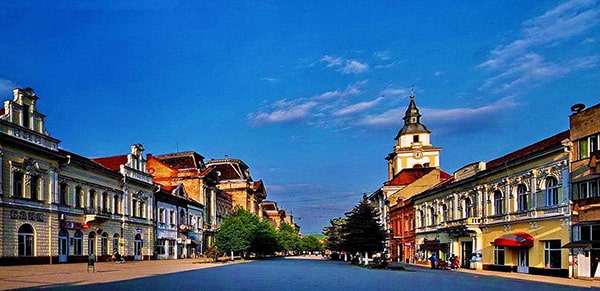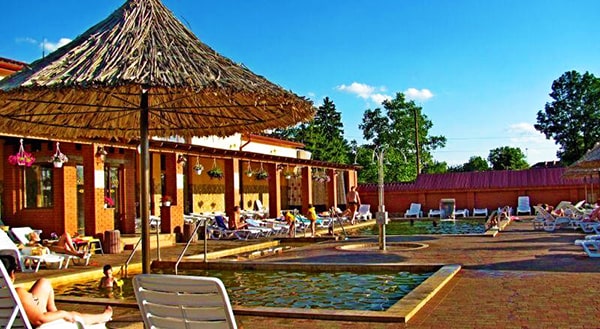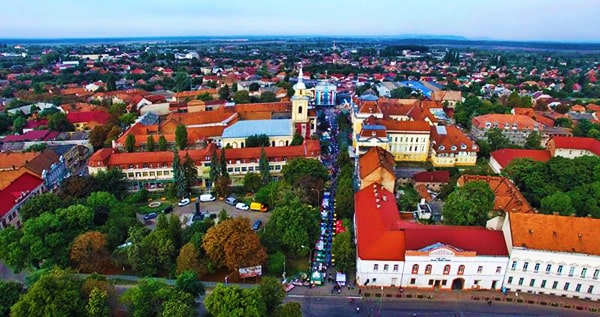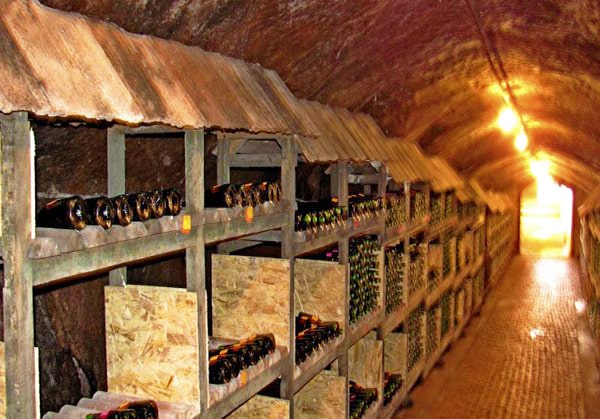Berehovo architecture: what sights to visit?

The heart of Berehovo - Lajosha Kochut square, one of the coziest in the country. Above the small houses on Kochut Square rises the so-called Berehivskyi Louvre - a luxurious building of the former Палацу правосуддя, королівського суду комітату Берег, built at the beginning of the 20th century in the neo-baroque style. After the Second World War, there were barracks here, then a secret factory of precision mechanics, and now there is the Transcarpathian Hungarian Institute named after Ferenc Rakoczy II. Nearby is the former masterpiece hotel "Royal", where students now live.
Nearby is one of the oldest churches in Ukraine - unique Roman Catholic Church of the Exaltation of the Holy Cross on Ferenc Rakocsi II Square, built in the 11th century. and later rebuilt in the Gothic style, preserving elements of Romanism. On the wall of the church you will see a sundial, and at the entrance to the church there is a monument to the first Hungarian king István the Holy. Another religious building in Berehovo is the Reformed Church of the XVI-XVII centuries. - is also located on F. Rakotsi Square II. The highlight of the temple is not only the architecture, but also the musical instrument that is still in use today - the organ of the famous Egerdorf firm "Rieger". Not far from the center, there is also a former synagogue, which today houses a cultural center.
Berehovo architecture known for twin houses or Meigesha and Kubovich palaces, which are vivid representatives of another Hungarian architectural style called Secession. This style, as a subspecies of Austrian modernism, was popular in the 19th and 20th centuries. and was distinguished by a symbiosis of various textures, effects and plant decorative elements. "Twins" have two floors and now there are apartments, they are located at the intersection of Secheny and Tinodi streets. The buildings are very similar to each other and once belonged to the chief architect of the city, Shmuel Meiges, and the lawyer Geise Kubovich. Today, authentic secession can be seen only in the Kubovich house - it has never been reconstructed.
The bridge and the bank of the Werke canal
Stone, the so-called "humped" bridge over the Werke Canal - the real beauty of the city. Initially, it was made of wood and three main trade routes passed through it: to Mukachevo, Vynogradovo and Vasharoshnamen. Later, the bridge was rebuilt in the Gothic style. Today, what makes it unique is its "humpness" - there are only a few such bridges in Europe. The architecture of Berehovo truly amazes and fascinates!
And on the bank of the Werke canal you will see Count's court in defensive castle style. The inscription "Bethlen, 1629" is still preserved on the facade. This is the former palace of Gabor Bethlen, Prince of Transylvania and King of Hungary. Before the princely residence grew here, there was a Dominican monastery on this place, which was destroyed by the reformers. From monastic times, only the Gothic basements have been preserved here, where the local history museum of the Beregivu region, which includes several thousand exhibits, is now operating.
Men's Casino, or "Golden Peacock", on the bank of the Verke canal is one of the most beautiful buildings in Berehovo, a unique example of Berehovo Art Nouveau and Art Nouveau. Peacock miniatures and ornaments on the facade, elegance and grace in lines and semicircular forms, luxurious ancient interiors with frescoes and amazing interiors - it is difficult to take your eyes off all this beauty. It was here that the city's elite once met, organized literary evenings, luxurious aristocratic balls, ceremonial and charity receptions. Now the restaurant and hotel "Zolota Pava" are located in the former casino.




